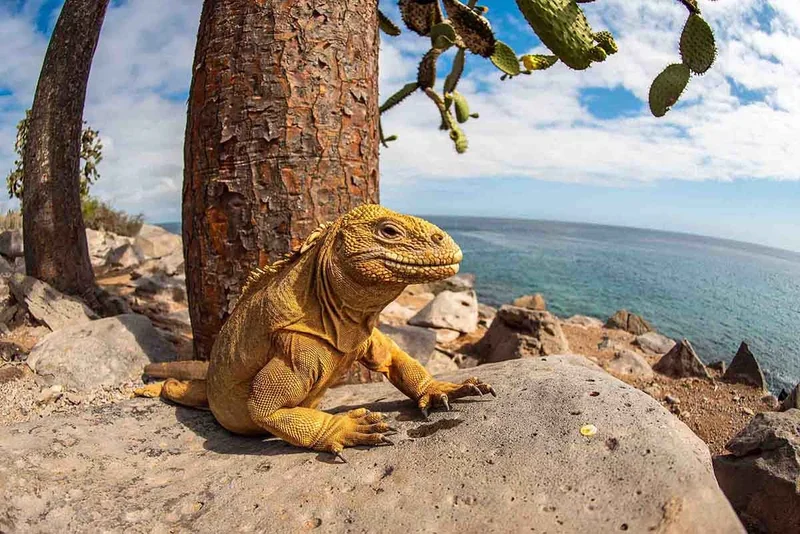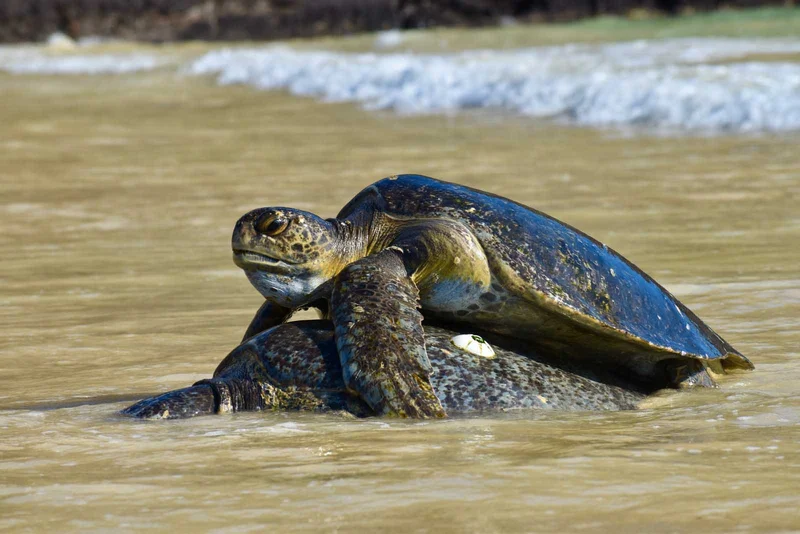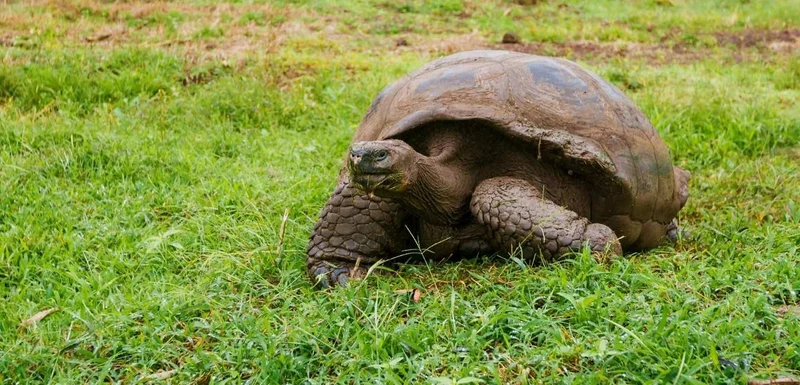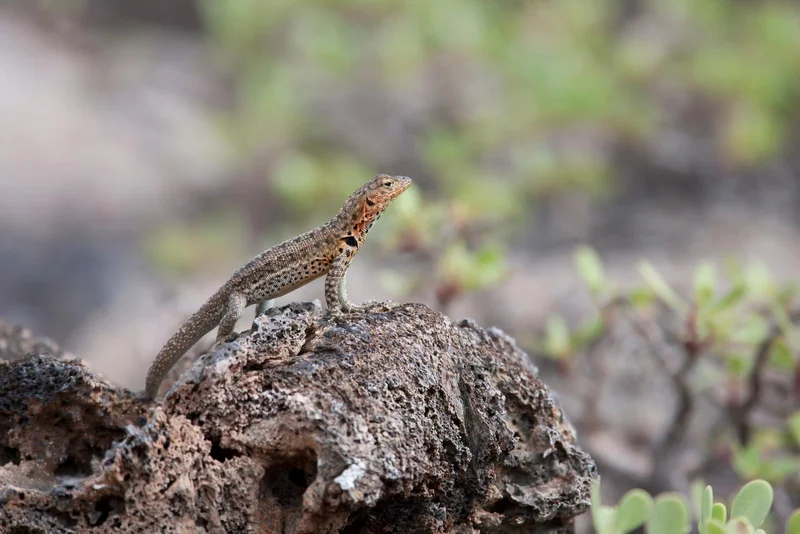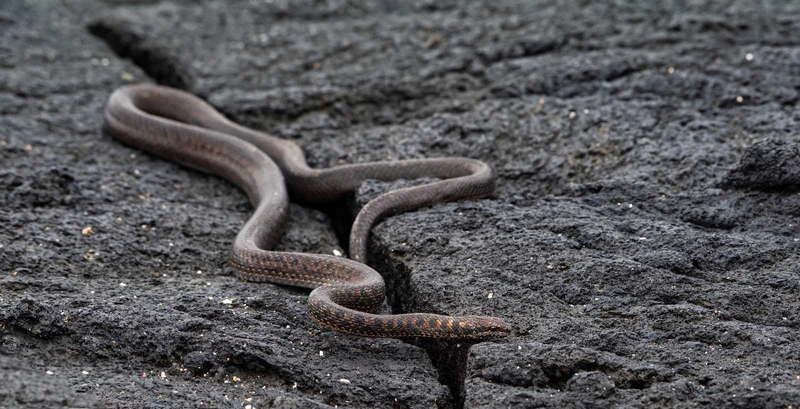Wherever there is a rocky shoreline in the Galapagos you will find a marine iguana basking in the sun. Scientists argue that the ancestor of the marine iguana arrived to the Galapagos swimming from the mainland. If so, the marine iguana was a fully land creature. As Darwin witnessed centuries ago the Galapagos present such a survival challenge to any creature that only the most adaptable survive. The marine iguana, not finding enough food within the islands, took to the sea and turned back to the land only for a sunbath.
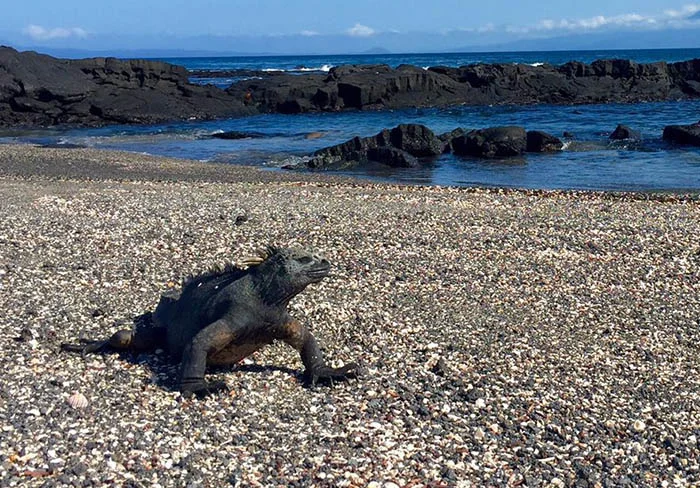
Galapagos Marine Iguanas
Life at sea
Marine iguanas are as clumsy on land as they are elegant in water. Their flat tails powerfully propels the iguanas in sinuous movements while their legs hang to the sides. Pushing through waves the male marine iguana reaches areas under the sea where food is more abundant. The females and younglings, on the other hand, remain by the shore feeding from the food nearby.
Attached to the submarine rocks the nutrient-full seaweed makes for a hearty meal. In order to eat it, however, the marine iguanas have evolved a flat face. Their blunt and round face is perfectly adapted to give the iguana better access to the rock-encrusted seaweed and by putting their long claws to good use marine iguanas hold steadily to the rocks withstanding the pounding waves as they feast on green or red seaweed. Yet, along with the algae the iguanas ingest large amounts of salt. Fortunately, a special set of glands in their nostrils help rid themselves of the excess salt — by sneezing it out. Charming.
Where to find them?
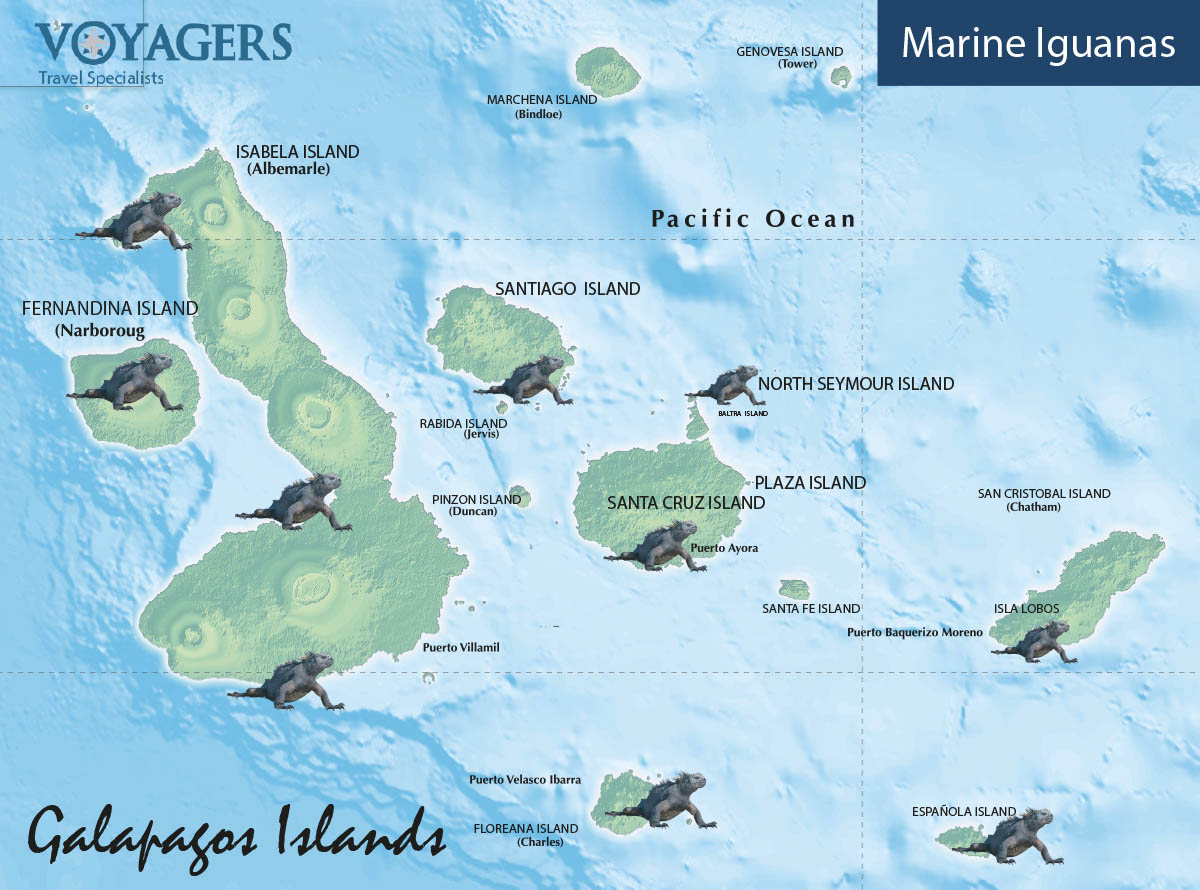
Christmas for Valentine’s
When it comes to reproduction marine iguanas take to the land. Here, a peculiar phenomenon takes place during mating season which has encouraged some creative visitors to baptize the animals as “Christmas Iguanas”. In an effort to captivate as many female iguanas as possible male iguanas change their color partially and in some cases almost completely. Depending on the island male marine iguanas may turn bright green or red as in Española and Floreana islands, or red and black in Santa Cruz island, or dull green and brick red in Fernandina island.
Female marine iguanas lay their eggs in burrows they dig in soft sand. Usually, females lay 1 to 4 eggs per nest which then take 4 months to hatch. Once born the young marine iguanas measure no more than 3 to 4 inches, small enough to make them easy prey for Hawks, Herons, Owls and feral cats, dogs, and rats that feed on eggs and infant iguanas.
Daily struggle
Predation by human-introduced species puts constant pressure on the survival of marine iguanas. Likewise, El Niño warms up the surface water in the central and eastern Pacific ocean reducing the seaweed supply and decreasing the marine iguana population — sometimes by up to 85%. Oil spills and the increasing marine plastic pollution also have a negative impact over the marine iguana population. Although not yet endangered scientists believe the pressure for survival is enough to consider the marine iguana a vulnerable species.
The upper hand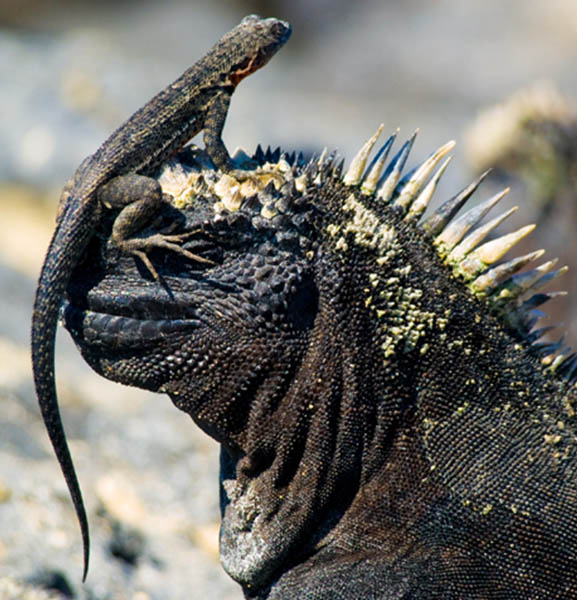
Fortunately, what they lack in looks they make up for in adaptability. When times get difficult marine iguanas have been observed eating crustaceans and grasshoppers, and in some instances even eating terrestrial vegetation. Even their rather asocial behavior appears not to be quite so, in fact, when it gets cold at night marine iguanas cozy up to each other in large groups that conserve the heat.
Marine Iguanas Facts
Marine iguanas have a wealth of hard and well-earned evolutionary advantages. So, if ever in need of good quiz questions here you have the top 5 fun facts about the Galapagos marine iguana:
- The male marine iguana can lose up to 10 °C of body heat once it dives into the waters. The same amount of heat loss could kill a human being.
- Iguanas can shrink their skeleton during a famine only to ‘re-grow’ it once food is available.
- Iguanas are black and proud, particularly because their skin helps them absorb sunlight better so they are warm enough to dive into chilly waters.
- Marine iguanas can’t breath underwater because they have no gills, but, they can hold their breath for up to 30-40 minutes per dive
- The Galapagos marine iguana is the absolute only lizard in the world that swims and feeds in the ocean. In short, they are as unique as are the Enchanted Islands.




